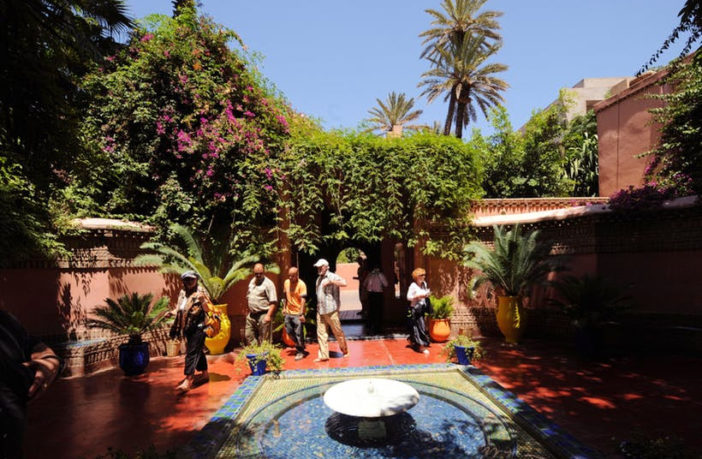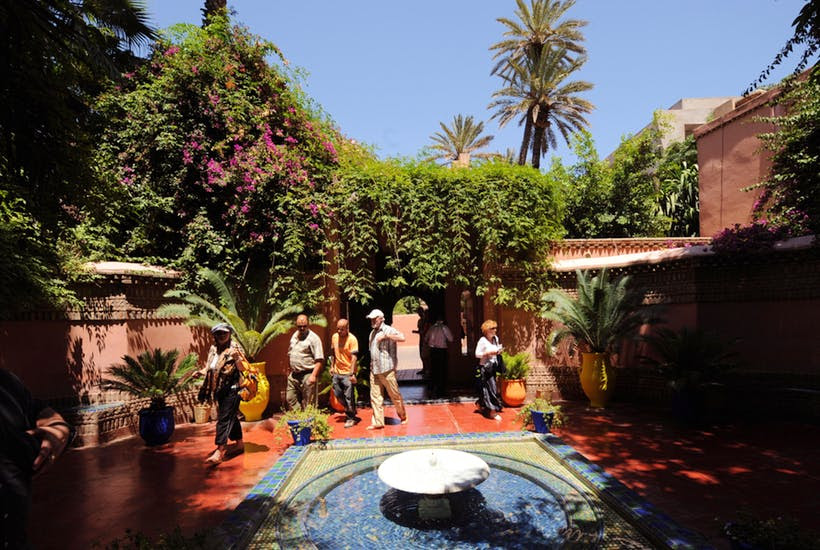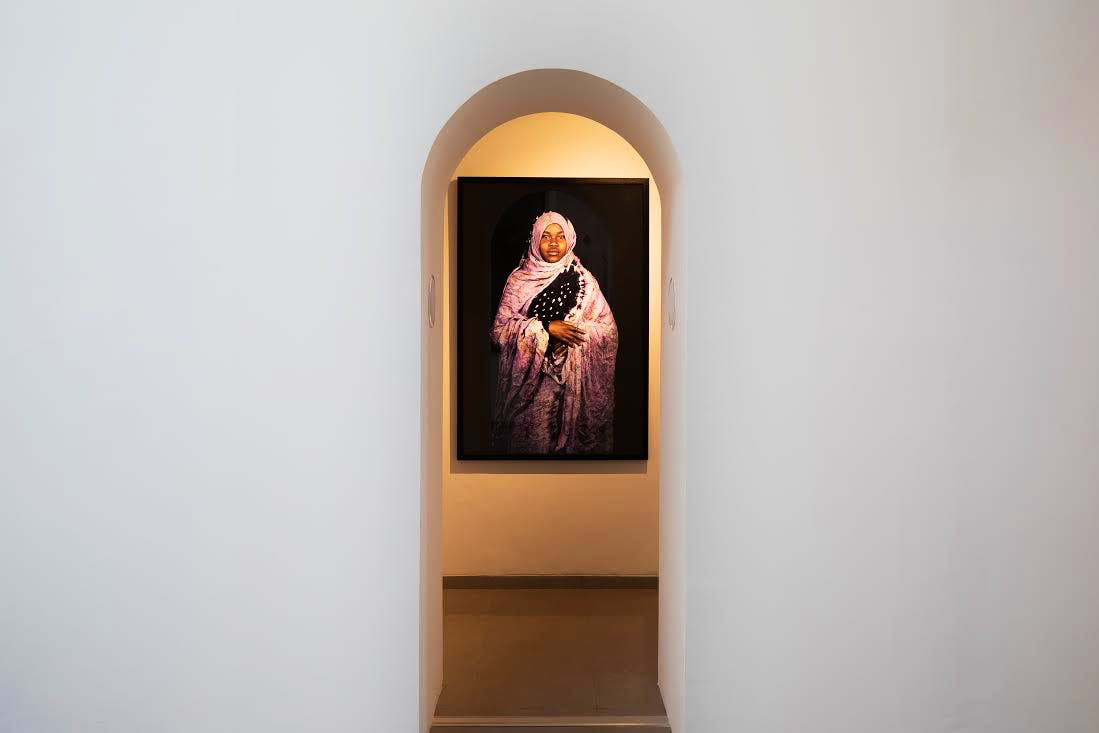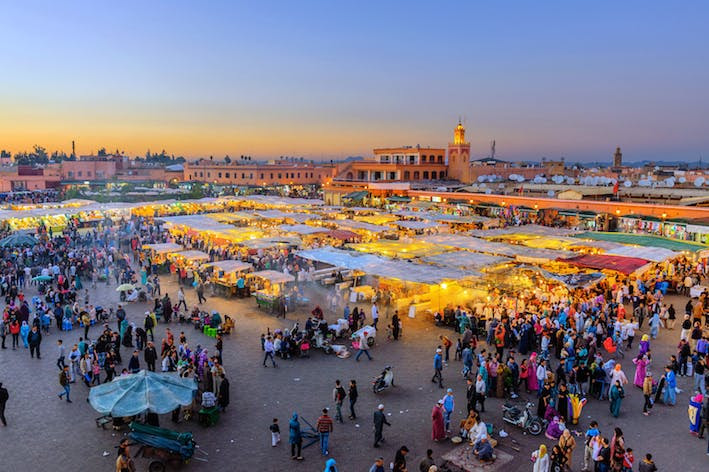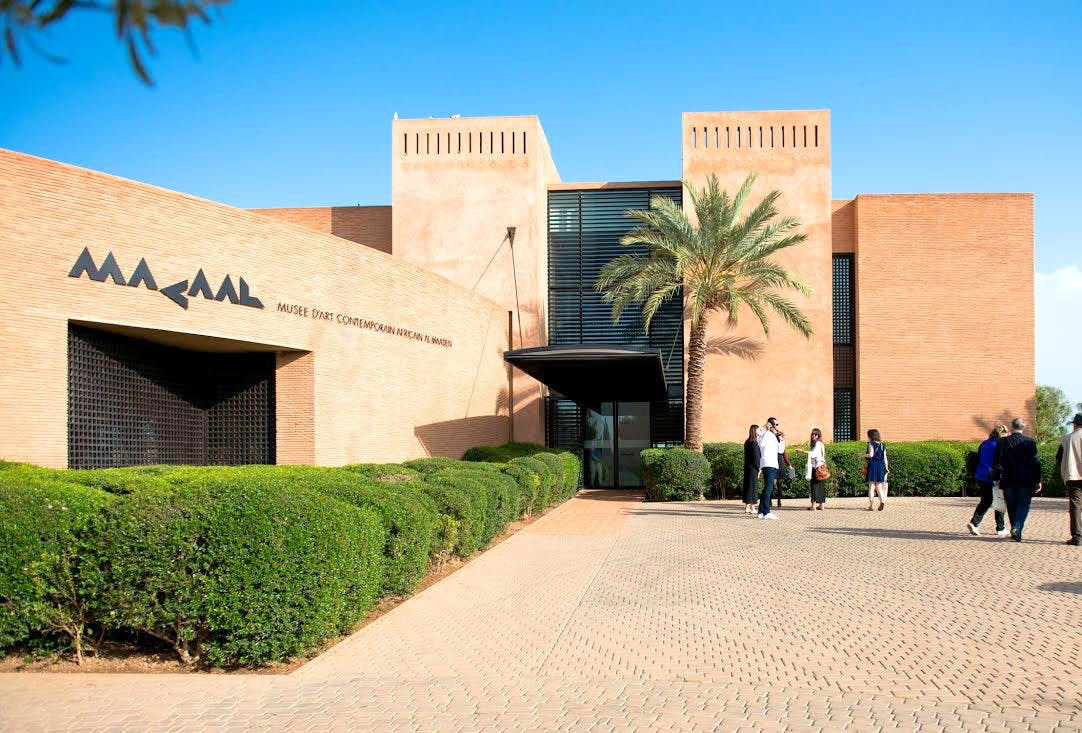Spectator.co.uk
Features Fleur Macdonald
There’s more for tourists in Morocco than package holidays thanks to a host of new galleries and cultural events.
A particularly vivid sunset in Marrakesh is said to have inspired such fervour in Franklin D Roosevelt that he turned to Winston Churchill and said: ‘I feel like a sultan; you may kiss my hand, my dear.’
Churchill had persuaded the American statesman to visit the ‘Paris of the Sahara’, after they’d attended the 1943 Casablanca conference together to discuss the war effort. The trip was described in Celia Sandys’ book The Travels of Winston Churchill.
Churchill returned often to the Moroccan city, staying in style at the hotel La Mamounia. He became good friends with the local elite including the Pasha of Marrakesh, Thami El Glaoui, also known as ‘The Black Panther’, whose golfing attire could often be spotted beneath his Berber robes. Churchill was instrumental in reconciling him to the fact his son wanted to be a painter. Hassan El Glaoui is now one of the most celebrated painters in Morocco. His work was exhibited alongside Churchill’s in an exhibition at Leighton House in 2012.
Leila Alaoui’s Khamlia, from the Moroccans series, which is on display at MACAAL’s Africa is No Island show (© Fondation Leila Alaoui, pic by Saad Alami)
The Marrakesh of Churchill’s time has not quite disappeared. 1:54, the contemporary African art fair, founded by El Glaoui’s daughter Touria, and held annually in both NYC and London, has just landed in Africa for the first time, at La Mamounia. Tunisia recently grabbed headlines as Thomas Cook resumed flights and package deals in February but it seems Marrakesh and Morocco are angling to attract a different type of tourist.
The celebrity most synonymous with Marrakesh is not an overweight Englishman but a whippet-thin Frenchman, Yves Saint Laurent, who first visited in 1966, a year before the Rolling Stones. In 1980, after years of visiting with a harem of models, artists and lovers, Yves Saint Laurent and his partner Pierre Berger bought a villa nestled in an oasis punctuated by cacti in azure pots. The Jardin Majorelle, where YSL’s ashes lie, is now one of the most popular tourist spots.
The couturier’s compatriots have followed in his footsteps and make up almost a third of tourists to the country today. But it was in 1998 that the French truly arrived in Marrakesh, says a Belgian hotelier, who I meet on the plane. He owns a riad in the medina (the old city) and a guesthouse on lake Lalla Takerkoust. For several years, he tells me, the architect Quentin Wilbaux had been quietly restoring houses in the medina. But a programme aired on the French television channel M6 announced that a sumptuous villa in the old quarter cost the same as a two-bedroom flat in Paris. ‘The phone lines of all the estate agents in the Medina started ringing as people tried to snap up property,’ the hotelier adds.
The economic crisis of 2008, then the Arab Spring in 2011, stemmed the flow of French tourists. In 2003, 33 civilians (mostly Moroccan) died in a terrorist attack in Casablanca. In 2011, 17 people were killed in the central square Jemaa el-Fnaa. In 2014 the French hostage Herve Gourdel was beheaded in Algeria. The French government put about 40 countries on a ‘high alert’ list, among them Morocco. The impact on French visitor numbers has been lasting with a seven per cent decrease from 2015 to 2016, according to the Moroccan Ministry of Tourism.
The Jemaa el-Fnaa square in Marrakesh (iStock)
The Swiss and the Danes have stayed loyal, and the Brits too, says the hotelier. ‘Everyone in Marrakesh learnt English in five years!’ He says there are more people from eastern Europe. The government has courted Chinese tourists by removing the need for a visa; local news outlets have reported a 760 per cent increase in Chinese visitors in January to May of 2017 compared to the previous year.
The Ministry of Tourism’s Vision 2020 programme aims to double the size of the sector which stands at over 10 per cent of GDP. It’s an attempt to diversify the type of tourism as well as the type of tourist offering a clear difference to ‘direct competitors, engaged mostly in a mass tourism’. This is a clear dig at other countries in the Maghreb whose focus on package deals and resort holidays have proved particularly vulnerable to political instability and terrorism. It will always be hard to reconcile rows of sun loungers and cocktails with the threat of militant Islam.
COP22, the UN’s climate conference that took place in 2016, has left Marrakesh with a gleaming globe of an airport, eerily empty as security demands that only passengers and staff be admitted. Throughout the city, there are lots of other new buildings. The architecture of the YSL museum, which opened last year, is as striking as the gowns and the images of the women who wore them within.
The Museum of African Contemporary Art Al Maaden (Saad Alami)
The new museum for contemporary art MACAAL should also be on the itinerary for the discerning visitor. There is only one other modern art museum in Morocco. The king’s museum opened in 2014 in Rabat focuses on Moroccan artists while MACAAL offers the rare opportunity to see work from many of the best emerging artists on the continent, in one place and in Africa (rather than in galleries of London or New York). The private collection contains 2,000 works which show the variety and vibrancy of contemporary art on the continent: from the layers of tribal ribbons by the Malian artist Abdoulaye Konaté to the plastic patchwork of the Ghanaian Serge Attukwei Clotte.
‘We had no help from the government,’ says Othman Lazraq, after he bounds through his collection and the building he designed. He set up the foundation with his father, one of the biggest property developers in Morocco. Like the YSL museum, and the 1:54 art fair, this is privately funded. The 1:54 art fair estimated they received more than 4,000 visitors in four days. Particularly memorable was the piece by Ghana-based artist Elizabeth Sutherland who performed a pulsating dance in the bustle of night-time Jemaa el-Fnaa. The new cultural scene is really down to the patronage of wealthy individuals – just as it has been in the past. Let’s see if the government can keep the city safe, and help this burgeoning scene flourish.




